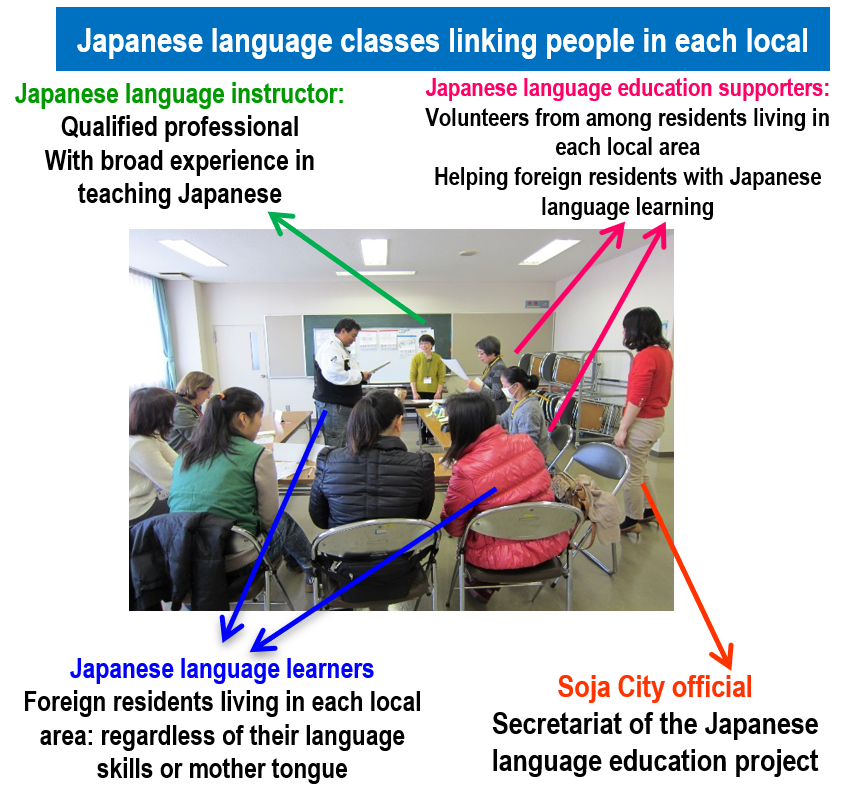Example
Building a city achieving multicultural coexistence through local Japanese language education —Establishing the Soja Model through regional collaboration—
Objectives and overview
In Soja City, the number of foreign workers sharply increased after the revision of the Immigration Control Act in 1990; however, many of them were fired due to the economic crisis in 2008, causing a serious situation. To accept foreigners as local residents, the “Soja City community-based participatory life support Japanese language education project” was established with the local government being the project entity in 2010. As a coordinator, we are operating and supervising the project, and carrying out six programs with “region” as a key word to build a system and network so that the entire region can support provision of Japanese language education to foreigners though exchanges among local residents.
(1) Japanese language classes linking people in each region
(2) Training for fostering community-based Japanese language education supporters
(3) Locally-based program for preparing Japanese language teaching materials
(4) Program for regional community collaboration disaster drills
(5) Program for supporting childrearing in local communities
(6) Research on support for Japanese language education to foreign workers working within a region
Expected effects
The Soja Model, which aims to create a city achieving multicultural coexistence through local collaboration centering on coordinators that build smooth relationships among diverse organizations and people involved in the Japanese language education project, including the local government, neighborhood community associations, NPOs, foreigner communities, childrearing support organizations, medical institutions and companies, has been a focus of attention as a project that will affect the course of local communities where aging of the population is accelerating, resulting from the decline in the birthrate and with the number of foreigners continuing to increase.


Representative
